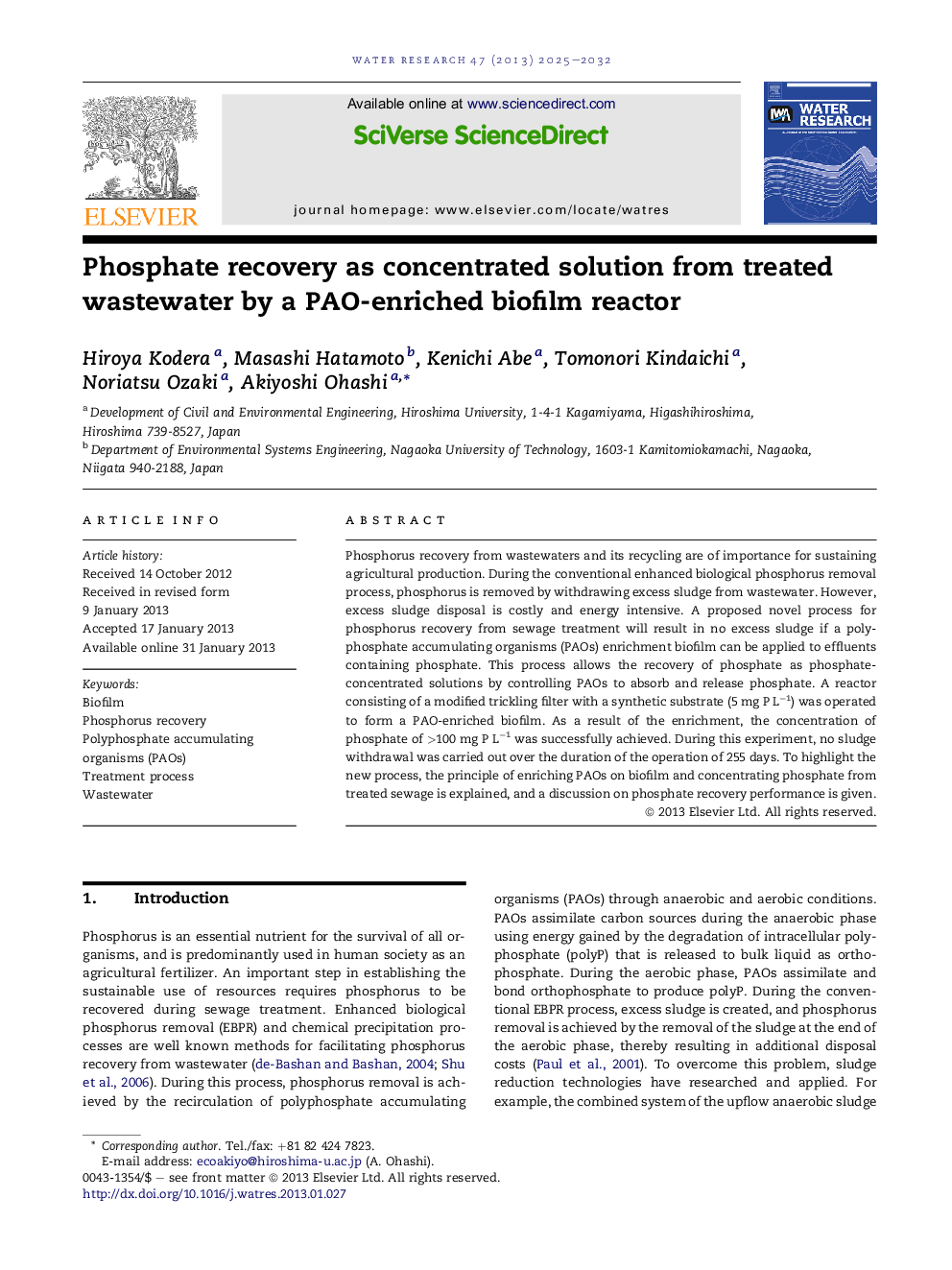| Article ID | Journal | Published Year | Pages | File Type |
|---|---|---|---|---|
| 4482424 | Water Research | 2013 | 8 Pages |
Phosphorus recovery from wastewaters and its recycling are of importance for sustaining agricultural production. During the conventional enhanced biological phosphorus removal process, phosphorus is removed by withdrawing excess sludge from wastewater. However, excess sludge disposal is costly and energy intensive. A proposed novel process for phosphorus recovery from sewage treatment will result in no excess sludge if a polyphosphate accumulating organisms (PAOs) enrichment biofilm can be applied to effluents containing phosphate. This process allows the recovery of phosphate as phosphate-concentrated solutions by controlling PAOs to absorb and release phosphate. A reactor consisting of a modified trickling filter with a synthetic substrate (5 mg P L−1) was operated to form a PAO-enriched biofilm. As a result of the enrichment, the concentration of phosphate of >100 mg P L−1 was successfully achieved. During this experiment, no sludge withdrawal was carried out over the duration of the operation of 255 days. To highlight the new process, the principle of enriching PAOs on biofilm and concentrating phosphate from treated sewage is explained, and a discussion on phosphate recovery performance is given.
Graphical abstractFigure optionsDownload full-size imageDownload high-quality image (129 K)Download as PowerPoint slideHighlights► A modified trickling filter reactor was applied for phosphorus recovery. ► The principle of enriching PAOs on biofilm and condensing phosphate from treated wastewater is given. ► PAOs were enriched by 30% of total bacteria in the process. ► The concentrated solution of 125 mg P L−1 was recovered from the influent of 5 mg P L−1.
